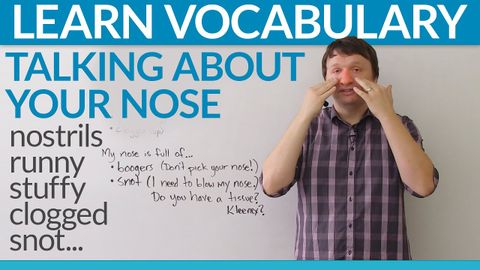英単語を学ぶ。鼻の話をしよう (Learn English Vocabulary: Talking about your nose!)
Calvin Liu が 2021 年 01 月 14 日 に投稿  この条件に一致する単語はありません
この条件に一致する単語はありませんUS /voˈkæbjəˌlɛri/
・
UK /və'kæbjələrɪ/
- v.t./i.吹き飛ばす;息を吐く;吹き飛ばす
- n.打撃、ショック;吐息;打撃
- v.i.吹く;飛ぶ
- v.t.ふいにする;投げキッスする
- phr. v.爆破する
- v.t.発行する;発行する;出す
- n. (c./u.)問題 : 論争点;(雑誌などの)号 : 版;子;論点;結果
- v.i.生じる
エネルギーを使用
すべての単語を解除
発音・解説・フィルター機能を解除

